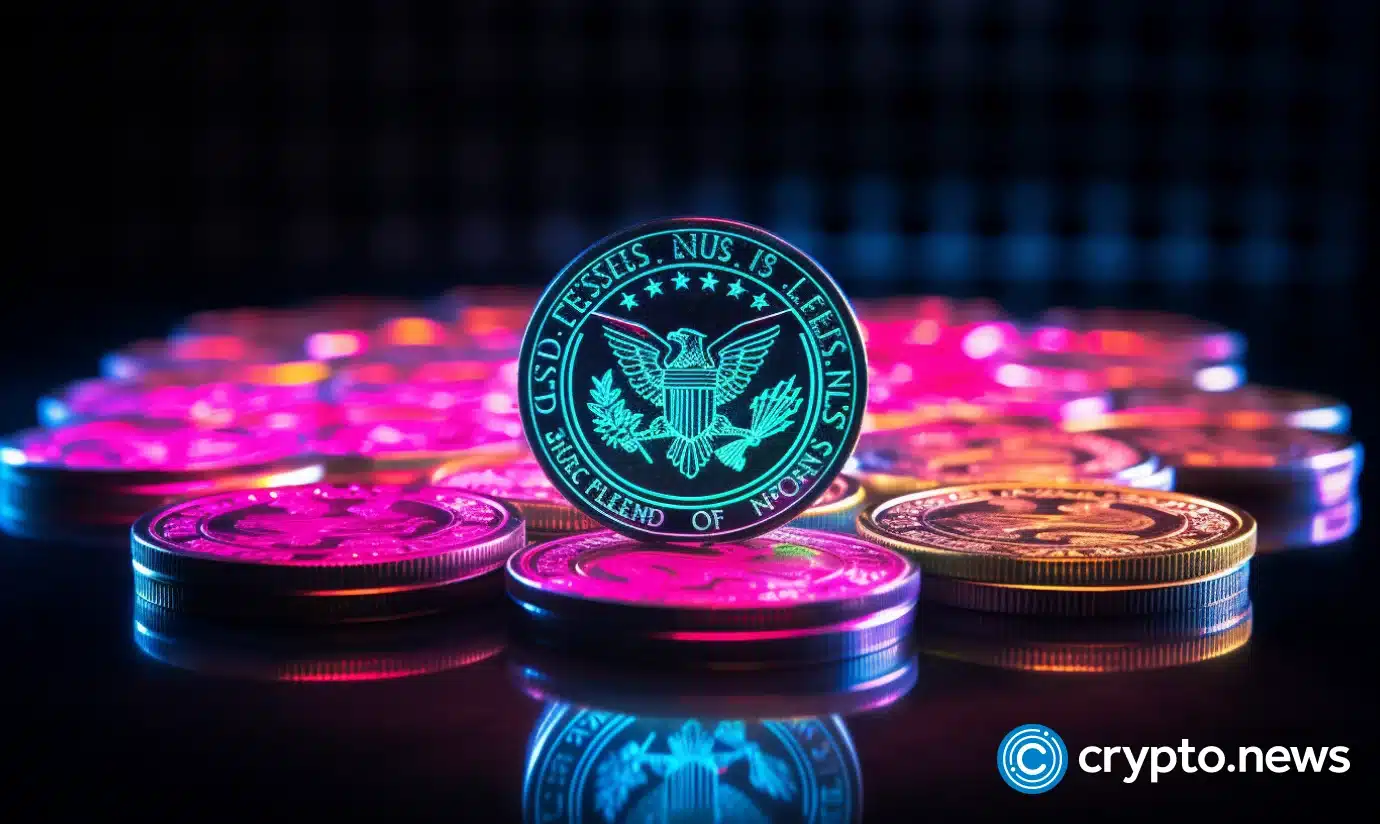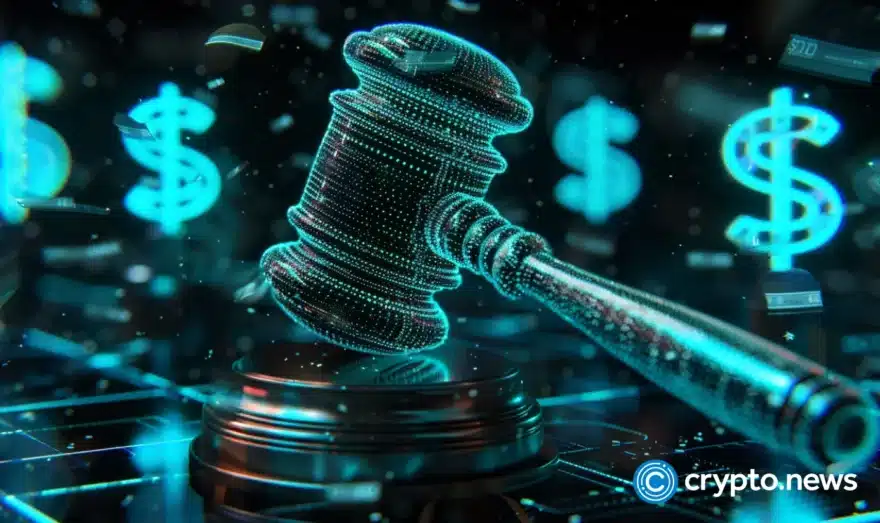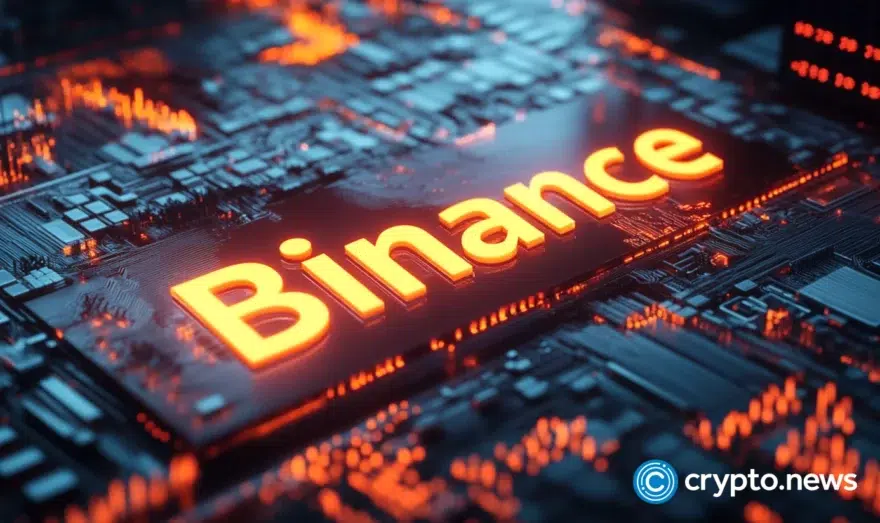The SEC’s crypto task force is Hester Peirce’s big move, but legal experts say “the courts” could flip the table

Hester Peirce is on a mission to clean up the SEC’s crypto mess. But as her task force takes action, legal experts warn the real fight will be in the courts.
Table of Contents
A new era of crypto regulations
For years, the crypto industry has operated in a regulatory fog, where rules felt like shifting targets rather than clear guidelines.
Under former Chair Gary Gensler, the U.S. Securities and Exchange Commission became notorious for its aggressive enforcement — filing lawsuits, shutting down projects, and cracking down on companies in what critics called “regulation by enforcement.”
But on Jan. 21, that era took a sharp turn. Hester Peirce, widely known as “Crypto Mom” for her pro-innovation stance, now leads the SEC’s newly established Crypto Task Force.
Acting SEC Chair Mark Uyeda, a known crypto advocate, appointed Peirce to lead the initiative — widely seen as a direct counter to Gensler’s legacy.
The task force moved swiftly. Within two days of its formation, it repealed the controversial Staff Accounting Bulletin 121, a rule that had made it difficult for banks to custody crypto assets.
That same day, Peirce introduced a 10-point roadmap outlining key crypto-related issues the SEC aims to address, promising long-awaited regulatory clarity — without compromising investor protection.
Bad actors, including scammers and market manipulators, will still face strict enforcement, but legitimate businesses will finally have the breathing room to operate without fear of arbitrary crackdowns.
Regulatory uncertainty & the crypto cleanup
The battle over crypto regulation stretches back more than a decade. The first Bitcoin (BTC) exchange-traded product application landed on the SEC’s desk in 2013, the same year the agency brought its first fraud case involving digital assets.
In 2017, the infamous DAO Report applied the Howey Test to crypto tokens, marking the first time the SEC classified them as securities.
Since then, the industry has operated under fragmented enforcement — multiple lawsuits, scattered no-action letters, and conflicting statements from SEC officials, but no definitive framework.
Over the past administration alone, the SEC initiated more than 100 enforcement actions, including ongoing litigation against major firms like Coinbase, which stands accused of operating as an unregistered securities exchange.
While the SEC argued these actions were necessary to protect investors, many in the industry saw them as an attempt to stifle innovation and push crypto firms out of the U.S. But now, things are shifting.
The SEC is scaling back its special crypto enforcement unit, which once had over 50 lawyers dedicated to targeting digital asset companies. Some have been reassigned, while others have left the agency altogether.
This restructuring signals a major policy shift, aligning with President Donald Trump’s broader pro-crypto stance. Shortly after taking office, Trump issued an executive order aimed at fostering the growth of digital assets and eliminating what he called “regulatory overreach.” The shake-up at the SEC is part of that larger plan.
Peirce has long advocated for a more practical regulatory approach. In a recent SEC position paper, she criticized the previous administration’s handling of crypto enforcement, likening it to a “car careening down the road.”
Not everyone welcomes this shift, though. Critics, including former SEC officials, warn that reducing enforcement could create loopholes for bad actors.
Corey Frayer, a former senior advisor on crypto policy, went as far as to say that Peirce’s new approach “removes the speed limits and guardrails” that kept the industry in check.
Breaking down Peirce’s 10-point plan for crypto regulation
Peirce acknowledges that fixing the regulatory landscape won’t happen overnight. “It took us a long time to get into this mess, and it is going to take us some time to get out of it.”
To tackle the industry’s biggest hurdles, she has outlined ten key focus areas that could reshape crypto regulation. Here’s what they mean and how they might impact the future of crypto space.
Defining what’s a security and what’s not
One of crypto’s longest-standing regulatory challenges is the lack of clarity on whether digital assets qualify as securities.
The SEC has relied on the Howey Test, a legal standard from 1946, to make this determination. However, the test was never designed for modern digital assets, leading to inconsistent enforcement.
Peirce sees resolving this issue as a top priority, as it directly impacts trading, investment products, and the legal status of thousands of tokens.
Many ongoing lawsuits, including the SEC’s case against Coinbase, hinge on this very question. The goal is to establish a clear, legally defensible framework that provides businesses and investors with definitive guidance.
Identifying what falls outside the SEC’s jurisdiction
Peirce acknowledges that the SEC has, at times, overstepped its authority by regulating areas that may not fall within its jurisdiction. The task force will work to identify boundaries and clarify what lies outside the Commission’s scope.
To help businesses navigate this, the SEC will encourage companies to submit no-action letter requests — formal inquiries asking whether specific activities would trigger enforcement actions.
If granted, these letters provide legal clarity and reduce unnecessary litigation, particularly for decentralized finance projects and utility tokens that don’t fit neatly into securities laws.
Creating a temporary safe harbor for token offerings
Regulatory uncertainty around token launches has driven many crypto startups away from the U.S. Peirce proposes a temporary safe harbor program, allowing tokens to initially be classified as non-securities if issuers:
- Provide specific disclosures about the token.
- Keep that information updated over time.
- Agree not to contest SEC jurisdiction in cases of fraud.
This structured approach would protect investors while enabling innovation, ensuring that exchanges can list tokens without facing immediate legal risks.
Revising the process for registering token offerings
Currently, the SEC allows token sales under Regulation A (a simplified framework for small public offerings) and crowdfunding rules.
However, Peirce argues these pathways weren’t designed for crypto and remain impractical for many projects. The task force will work on modifying these frameworks to make them more accessible to startups.
Expanding the special-purpose broker-dealer rule
In 2021, the SEC introduced a special-purpose broker-dealer rule, allowing firms to custody crypto asset securities. However, Peirce admits the rule “has not been a success.”
A key issue is that firms cannot hold both security tokens and non-security crypto assets together, making comprehensive custody solutions unworkable. Peirce proposes expanding the rule to allow firms to handle both asset types, making it more practical for real-world use.
Establishing clear custody rules for investment advisers
Institutional investors remain hesitant to enter crypto due to uncertain custody regulations. Many investment advisers fear that holding crypto on behalf of clients could violate SEC rules, exposing them to legal risks.
The task force plans to work with industry participants to develop a transparent regulatory framework for crypto custody, making it easier for traditional financial firms to engage in the market.
Providing clarity on crypto lending and staking
Crypto lending and staking services have been frequent targets of SEC enforcement.
In 2023, the SEC sued Kraken over its staking program, arguing it functioned as an unregistered securities offering. Yet, there is little legal guidance on how staking and lending should be regulated.
Peirce states the task force will “provide clarity about whether crypto-lending and staking programs are covered by securities laws, and if so, how.” This could help companies design compliant services and reduce the risk of sudden enforcement actions.
Improving the approval process for crypto exchange-traded products
The SEC’s approval of Bitcoin spot ETFs in January 2024 was a breakthrough, but many crypto-based exchange-traded products remain stuck in regulatory limbo.
Peirce’s task force aims to streamline the approval process and establish clear evaluation criteria. Key areas of focus include:
- Allowing staking within ETFs.
- Expanding in-kind creations and redemptions, enabling investors to swap ETF shares for actual crypto assets.
These changes could expand investment opportunities for both institutional and retail investors.
Addressing blockchain’s role in traditional securities markets
Blockchain has the potential to modernize financial markets, but existing clearing and settlement rules weren’t built for digital assets.
Financial institutions are increasingly exploring tokenized securities—stocks, bonds, and other assets issued and traded on blockchain networks.
The task force will examine how crypto fits within current regulations and collaborate with industry players to update clearing agency and transfer agent rules, aiming to reduce settlement times and transaction costs.
Creating a global regulatory sandbox for crypto
Crypto operates across borders, but U.S. regulations often conflict with those in other jurisdictions, pushing companies offshore in search of more predictable legal environments.
Peirce’s task force is considering a cross-border regulatory sandbox, allowing crypto projects to operate under controlled conditions across multiple jurisdictions.
Legal perspectives on Peirce’s crypto task force
To understand the potential impact of Peirce’s Crypto Task Force, crypto.news spoke with Max Burwick, Founder and Senior Managing Partner at Burwick Law.
His firm is leading an enforcement case against Pump.fun, a platform accused of violating U.S. securities laws by selling unregistered securities disguised as meme tokens.
Given his experience in crypto-related legal battles, Burwick explained that the courts, rather than just the SEC, will play a key role in defining crypto regulations. While the SEC enforces securities laws, its power is more limited than many assume.
“While the SEC enforces securities laws, it is the courts that determine the legal limits of those laws, deciding when an asset qualifies as a security and whether the SEC’s actions are valid. Congress, as the legislative branch, creates the legal framework, while the judiciary interprets that framework and constrains the authority of administrative agencies like the SEC.”
The classification of meme coins under securities laws has been a subject of debate. Some argue their speculative nature makes them investments, while others see them as commodities or collectibles. Burwick noted that courts do not treat all tokens the same way.
“No meme coin is inherently a security. Instead, courts look at the facts and circumstances surrounding its creation, marketing, and distribution. The courts have consistently applied the Howey Test to digital assets, but they do not merely apply Howey in a formulaic way — they use the economic realities test to assess the substance of a transaction rather than its form. A token that is purely decentralized, with no entity promoting it as an investment and no structured financial incentives, is unlikely to be classified as a security. However, if a meme coin is launched with heavy promotional efforts, structured fundraising, and a roadmap tied to a central team, it could very well meet the Howey Test’s criteria for an investment contract.”
This legal approach has been reflected in multiple court rulings examining how digital assets were offered to investors. Burwick pointed to cases where courts ruled that even if a token itself was not a security, the way it was sold and promoted could place it within securities laws.
“In SEC v. Telegram, the court ruled that while the ‘Grams’ tokens themselves were not inherently securities, the way they were distributed — particularly through presale agreements — made them part of an unregistered securities offering. Similarly, in SEC v. Kik Interactive, the court determined that the ‘Kin’ token met the criteria for an investment contract because the company actively promoted its future value, creating an expectation of profits based on Kik’s efforts. The Friel v. Dapper Labs case showed that NFTs, under certain conditions, can be considered securities when their value depends on the issuer’s continued efforts.”
While the SEC has aggressively pursued enforcement actions against crypto projects, courts serve as a necessary check on regulatory overreach. Not every case the SEC brings results in a victory, and courts often set long-term precedents.
“The SEC may bring cases, but if a case has no legal basis, a court will dismiss it. The judiciary determines which cases are valid, interprets legal definitions, and sets precedents that will define the industry’s future.”
With more regulatory discussions taking place at the SEC, there is growing anticipation about how clearer legal definitions could impact crypto businesses. Burwick sees the industry at a transition point, similar to the early internet era.
“We have yet to experience the full scope of innovation in the crypto ecosystem. Just as the dot-com crash forced the industry to mature and shift from speculation to real-world applications, the crypto industry is undergoing a similar transition.”
Hype-driven projects have dominated the crypto space, with many failing to deliver long-term value. Burwick noted that speculation has often overshadowed real innovation, making it difficult for legitimate businesses to grow.
“For the past few years, the crypto industry has been plagued by scams, speculative bubbles, and projects that fail to maintain long-term value. The reality is that bad actors have been more of the norm than the exception.”
He believes well-defined regulations would not hinder crypto’s progress but instead create an environment where trustworthy projects can thrive.
“A defined regulatory framework will not restrict innovation but will create an environment where legitimate projects can thrive. Investors participate in financial markets because they have confidence that the system is governed by rules, fraud is prosecuted, and information asymmetry is mitigated through disclosure requirements.”
One of the biggest shifts in crypto could come from blockchain’s use beyond speculative trading. Burwick explained that the next wave of blockchain applications will likely move away from traditional crypto branding.
“The next phase of crypto will not be defined by hype-driven token launches but by the integration of blockchain into real-world applications, financial infrastructure, and consumer products in a way that enhances efficiency and security.”
Burwick also drew parallels between today’s crypto market and the early days of the internet, where many companies failed, but those that built real solutions endured.
“In the 1990s, many companies launched dot-com projects with little substance, leading to a bubble and widespread collapse. However, out of that speculative era emerged a regulatory and technological foundation that allowed companies like Amazon, Google, and PayPal to build sustainable, innovative businesses.”
With Peirce’s Task Force aiming to define clearer guidelines, the industry will be watching how these discussions translate into policy changes. Ultimately, however, legal battles and judicial decisions will shape crypto’s regulatory future.















